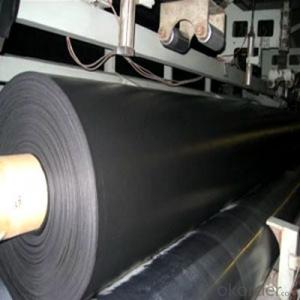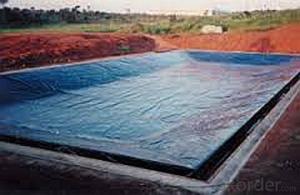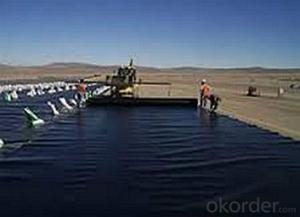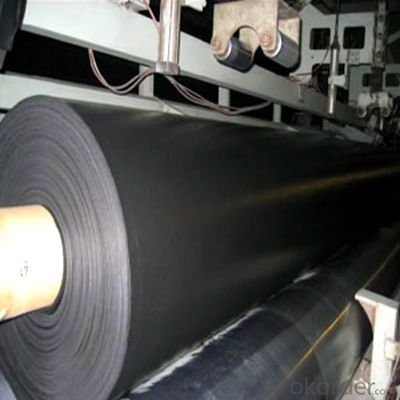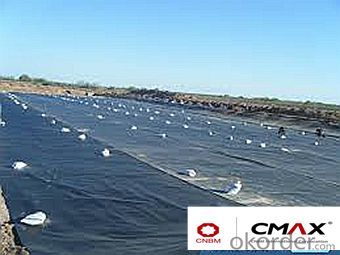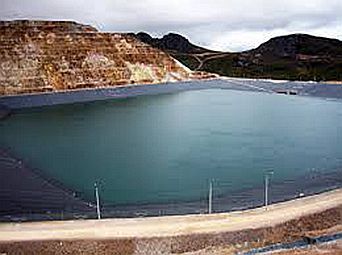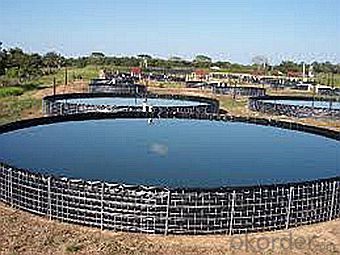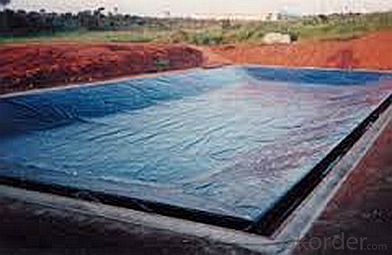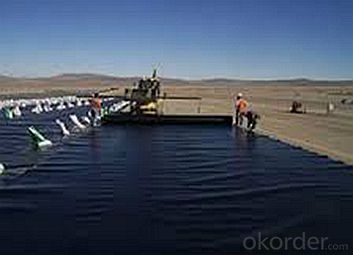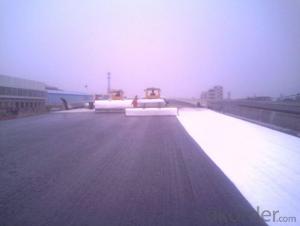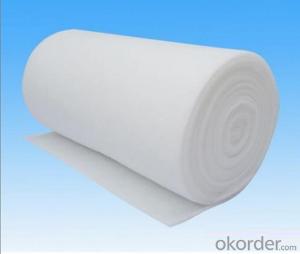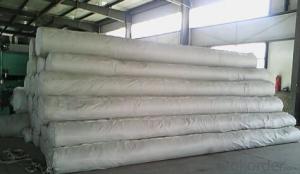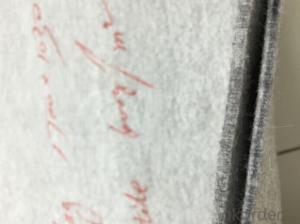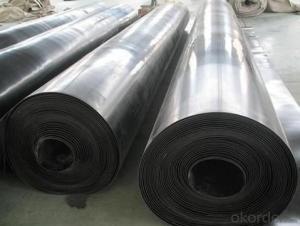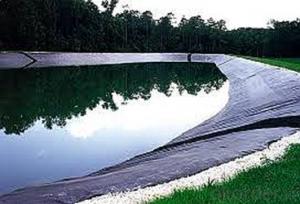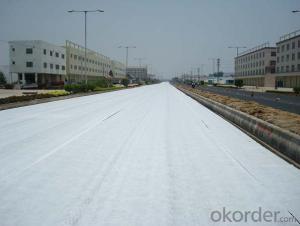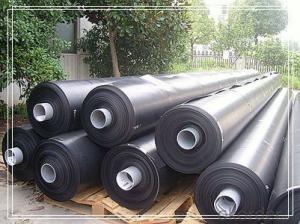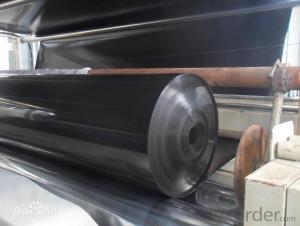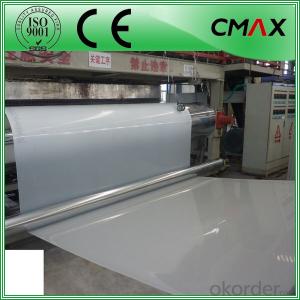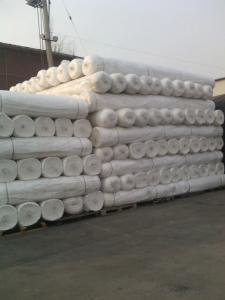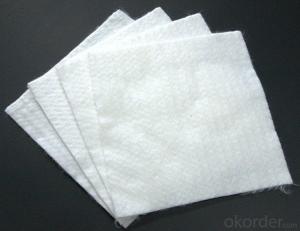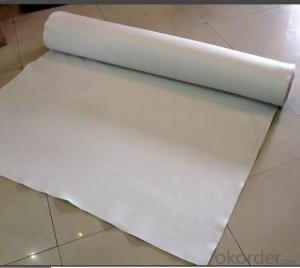600g/sqm High-Density Polyethylene (HDPE) Geomembrane with Agricultural 600r Geotextile
- Loading Port:
- China main port
- Payment Terms:
- TT OR LC
- Min Order Qty:
- 1000 m²
- Supply Capability:
- 1000000 m²/month
OKorder Service Pledge
OKorder Financial Service
You Might Also Like
Specification
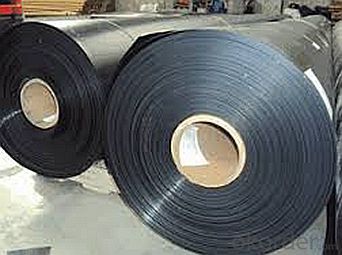
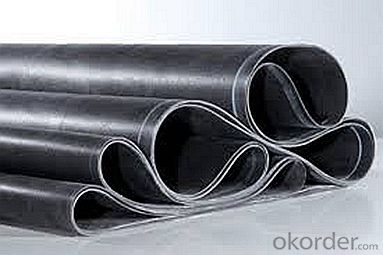
Product description
A geomembrane is very low permeability synthetic membrane liner or barrier used with any geotechnical engineering related material so as to control fluid (or gas) migration in a human-made project, structure, or system. Geomembranes are made from relatively thin continuous polymeric sheets, but they can also be made from the impregnation of geotextiles with asphalt, elastomer or polymer sprays, or as multilayered bitumen geocomposites. Continuous polymer sheet geomembranes are, by far, the most common.
High-density polyethylene (HDPE), commonly used as a geomembrane and is similar to the material used in black polyethylene pipes. It has a broad chemical resistance and excellent UV resistance; all of them are with ISO certificates and widely accepted in USA, England, Russia, UAE, Mexico and other Asian countries.
Impermeable Geomembrane HDPE for Shrimp Pond is mainly made of virgin HDPE with blow molding technique. Its main function is to prevent the liquid leakage and gas volatilization.
Packaging & Shipping
Packing: PLASTIC FILM INSIDE, AND WOVEN BAG OUTSIDE
Shipping: About 15 days after receipt the deposit
geotextile fabric
permeability,filtration,easy for construction
ISO and CE certificate
Good quality and competitive price
Our Service
Quality assurance
1.On a regular basis or as per your request,we entrust national testing agencies to conduct quality inspections
2. Strictly in accordance with the ISO9001-2008 international quality system standard,we monitor and manage the whole process throughout production,quality testing,and measurement to ensure product quality
3. For quality-related construction delay or substandard construction(except for damage or losses due to customer’s responsibility or irresistible natural disasters),we have refunding,replacement,and repair services.We will respond to customers’ feedbacks on quality issues within 24 hours.
After-sales service
1.In order to provide customers with comprehensive technical support,we will provide technical and other related information upon request in a timely manner.
2.In required,we will appoint specialized technicians to the construction site to give technical trainings to construction people,and offer technical guidance throughout the whole construction process.
3.For damage due to shipment and delivery,after we receive the complaint,we will check the issure through provided pictures and videos.If our responsibility is confirmed,we wil offer free replacement.
4.When the construction is completed,as your request,our technical staff may participate in the final acceptance.
FAQ:
Q: What kind of payments does jenor support?
A: T/T, L/C, Cash are accepted.
Q: Do you charge for the samples?
A: Accordeing to our company policy, the samples are free, we only charge the freight fee. And we will return the freight fee during the next order.
Q: Can you produce according to customers' design?
A: Sure, we are professional manufacturer, OEM and ODM are both welcome.
Q: Do you have other products?
A: Yes, please check the pictures:
- Q: Can geotextiles be used in contaminated soil?
- Yes, geotextiles can be used in contaminated soil. Geotextiles are often used as a barrier or filter in construction projects to separate and stabilize soil layers. In the case of contaminated soil, geotextiles can help prevent the spread of contaminants by acting as a barrier between the contaminated soil and clean soil or groundwater. They can also aid in soil remediation efforts by providing a physical barrier that allows for easier removal of the contaminated soil.
- Q: How do geotextiles help in reducing the risk of landslides?
- Geotextiles help in reducing the risk of landslides by providing stabilization and reinforcement to the soil. When placed on slopes or hillsides, they act as a barrier that prevents soil erosion and the movement of loose materials. The geotextiles have a permeable nature, allowing water to pass through while retaining the soil particles. This helps in maintaining the stability of the slope, reducing the chances of landslides. Additionally, geotextiles can also aid in draining excess water from the soil, further enhancing the stability and reducing the risk of landslides.
- Q: What are the different design considerations for geotextile applications?
- Some of the different design considerations for geotextile applications include the type and strength of the geotextile material, its permeability and filtration characteristics, its durability and resistance to degradation, the required tensile strength and elongation properties, as well as its installation and maintenance requirements. Other factors to consider include the anticipated loadings and stresses on the geotextile, the expected lifespan of the application, and any specific project requirements or environmental considerations.
- Q: Can geotextiles be used in shoreline revetment projects?
- Yes, geotextiles can be used in shoreline revetment projects. Geotextiles are commonly used to stabilize soil and prevent erosion in various civil engineering projects, including shoreline revetments. They can help reinforce the revetment structure, retain soil particles, and provide filtration, thereby enhancing the overall stability and effectiveness of the revetment system.
- Q: Drainage board geotextile or gravel plus geotextile which water treatment effect is good
- Sure that the drainage board plus geotextile drainage effect is good, but the cost than the gravel Gao Hua Zhi geotechnical materials manufacturers to answer
- Q: How are geotextiles incorporated into engineering designs?
- Geotextiles are commonly incorporated into engineering designs as they provide a range of benefits such as soil stabilization, erosion control, drainage improvement, and reinforcement. They can be used in various applications such as road construction, retaining walls, embankments, landfills, and coastal protection. Geotextiles are often placed between soil layers to separate and reinforce them, enhancing the overall stability and durability of the project.
- Q: Geotextile is used to do anything
- Geotextiles have multiple varieties, there are a variety of uses, different varieties have a different emphasis on different functions. Woven geotextile, or geotextile, can be used for foundation treatment in the reinforcement and isolation and filtration. Non-woven geotextile, mainly used for foundation treatment in the filter and isolation. Can also be used in other projects in the filter. Nonwovens for the example of the filter: now in the municipal engineering around the Yinjing, often because the surrounding groundwater into the Yinjing will take away part of the soil, resulting in the loss of soil around the wells, the results in the perimeter around the wells There is a collapse phenomenon, if the circle around the perimeter of the laying of non-woven geotextile, the side can play a role in filtering, so that groundwater can flow into the Yinjing, but the soil will not lose the purpose of the perimeter around the soil There will be no collapse of the phenomenon.
- Q: How do geotextiles improve the performance of geomembranes?
- Geotextiles improve the performance of geomembranes by providing separation, filtration, and reinforcement functions. They prevent the mixing of different soil layers, enhance drainage, and distribute loads more evenly. Additionally, geotextiles protect the geomembranes from punctures and abrasions, thereby increasing their durability and lifespan.
- Q: How do geotextiles contribute to soil stabilization in mining areas?
- Geotextiles contribute to soil stabilization in mining areas by providing reinforcement and preventing erosion. These synthetic materials are placed within the soil to enhance its strength and stability, reducing the risk of landslides and soil disturbances. Geotextiles also act as a barrier, preventing the migration of fine particles, thereby improving soil filtration and preventing contamination of nearby water bodies.
- Q: What are the different factors to consider for geotextile selection in landfill applications?
- There are several factors to consider when selecting geotextiles for landfill applications. These include the type and composition of waste being disposed of, potential chemical interactions, required strength and durability, permeability and filtration requirements, and compliance with regulatory standards. Other factors such as installation and maintenance costs, availability, and environmental sustainability also play a role in geotextile selection for landfill applications.
Send your message to us
600g/sqm High-Density Polyethylene (HDPE) Geomembrane with Agricultural 600r Geotextile
- Loading Port:
- China main port
- Payment Terms:
- TT OR LC
- Min Order Qty:
- 1000 m²
- Supply Capability:
- 1000000 m²/month
OKorder Service Pledge
OKorder Financial Service
Similar products
Hot products
Hot Searches
Related keywords
